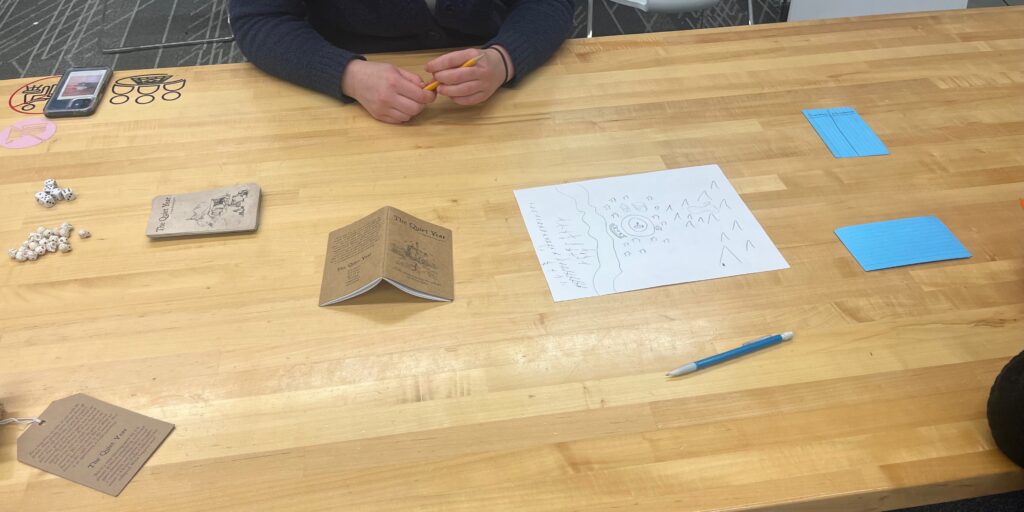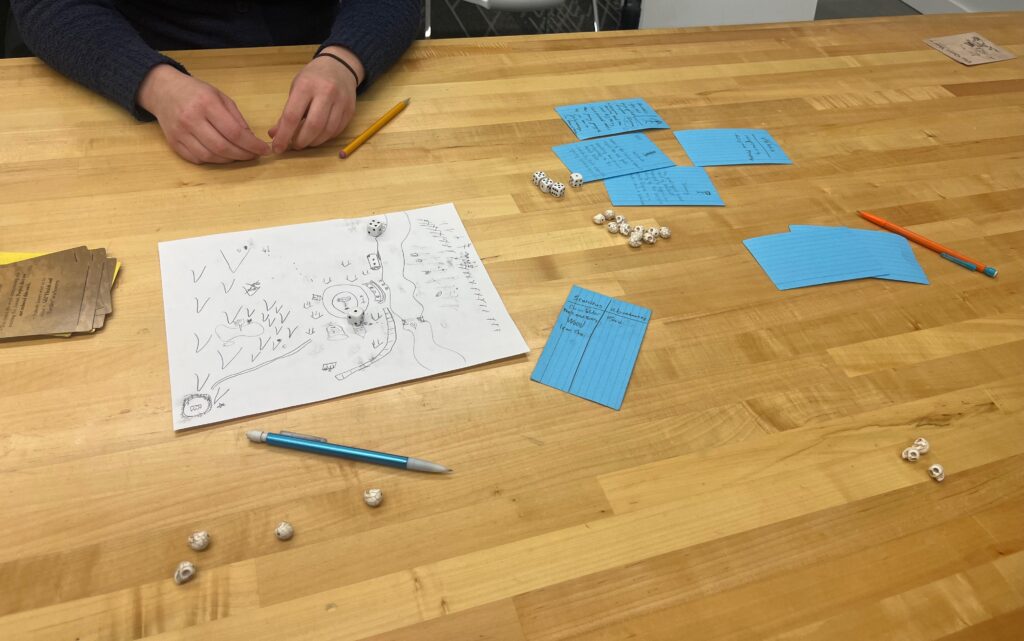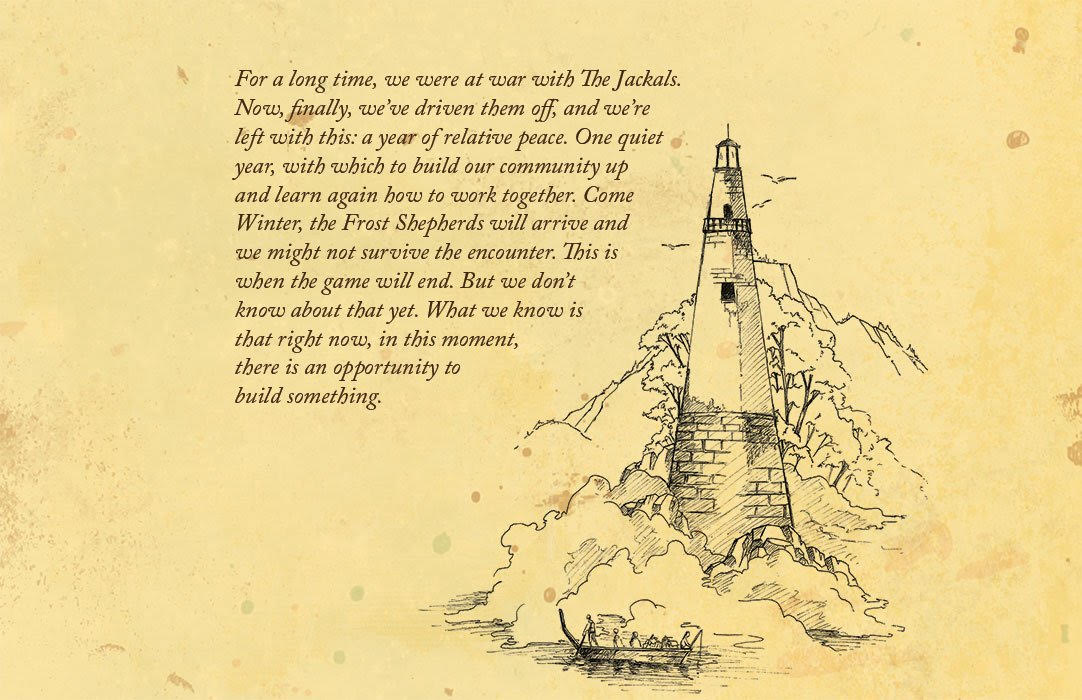My name is Justice Andersen, and for the TTRPG review, my friends and I decided to play The Quiet Year as I had heard much about it and it seemed like a relatively tame introduction to TTRPGs. In this game, the players pose as the social forces that govern a community and guide its path together through a year of recovery, while being posed challenges by both the cards and each other. This is done in the way any community would – exploring the land, holding forums and starting projects. Overall all of us enjoyed this game greatly, and even my friends who were not well versed in board games (especially TTRPGs) found themselves immersed in the world we had co-created. In this review, I wanted to highlight some aspects I think this TTRPG does especially well.
Tension and Resolution
One of the clearest things this game does well is getting its participants to introduce conflict to prevent the game from being too easy. Whether this comes in the form of a card which forces a choice between two bad options or the encouragement baked into the rulebook imploring players to be impartial when introducing new challenges to the community, the game succeeds in emphasizing the need for conflict within the community. For example, in the initial introduction segment of the game when we were picking important resources, we all picked resources we thought we would want the community to have right away – food, water and iron ore. When iron ore was then randomly chosen as the abundance, and the other two became scarce it created a conflict that lasted for most of the game – trying to build a water plant to clean the local tainted water was a project that continued to fail over and over and caused much frustration (both between the players, and among the “community”).
Uncertainty
In addition, another source of tension that we felt greatly impacted play was the idea that other players should not openly comment or suggest ideas to the person who is currently deciding the community’s actions. This meant that the person in control had complete narrative freedom to do whatever they thought best in that current situation. While this was frustrating while playing, it created huge levels of uncertainty among the players about what would happen next in the story. While the solution to a problem or the course of action might be clear to one player, another may ignore that altogether and focus on a totally unrelated problem. One of these situations occurred while a schism was going on between two factions of the town which me and another player thought was the most pressing issue at hand, the third player instead focused their turn on sending out an expedition to explore a part of the map we hadn’t touched yet (inevitably resulting in contempt tokens being taken). Situations like this in tandem with the cards constantly introducing new scenarios and challenges to overcome for each player meant that what happened on the next player’s turn had a serious chance of impacting the narrative. This also created a feeling of power and agency for each player as they had exclusive control over the community, at least for their turn.
Collaboration
One option that my friends and I found ourselves gravitating towards a surprising amount was that of “Hold a discussion”. Because the game was intentionally limiting in its restriction of open conversation about issues and solutions, this option felt semi-mandatory at times just to ensure that we could all communicate and get on the same page about what was going on in the community. Although as a mechanic it has no functional game-affecting purpose, it does have a player affecting purpose, which is part of what makes it feel so necessary, the desire to have the other players weigh in on your ideas in a game that intentionally inspires feelings of solitude.
Conclusion
Overall this game very elegantly creates a scenario where players are both encouraged to collaborate and also forced into conflict with each other, mimicking the real life competing desires of members of a community. Doing all of this without requiring the players to actually choose specific characters for themselves and yet still having the players feel invested in the world they are co-creating is part of what sets this game apart and in my opinion leaves it more open to newcomers (like us) who are new to some of the more complex elements of TTRPGs.
Below are some photos from the start of the game and some point during Autumn (the 3/4 mark of the game).


